Installing Joomla on Ubuntu 20.04 / 18.04

In terms of creating web sites, one of many best methods to get your web site up and operating is to make use of CMS (content material administration system), which is often included PHP code and all of the themes and extensions you want.
Besides WordPress, one other fashionable CMS Is Joomla. Joomla is a free and open supply CMS constructed on PHP and shops its knowledge in a SQL-based database engine within the background.
On this article, you’ll learn to set up Joomla on Ubuntu 20.04 / 18.04 and newer Ubuntu releases.
Step 1: Replace your Ubuntu system packages
It’s all the time a good suggestion to replace system packages and archives above all else. So improve and improve your system by operating.
$ sudo apt replace -y && sudo apt improve -y

Step 2: Set up Apache and PHP on Ubuntu
Joomla is written PHP and save the information MySQL double fabric. As well as, customers can entry wherever Joomla primarily based web site via a browser, and for that reason we have to set up Apache serving net server Joomla pages.
Set up Apache and PHP (we’re going to use PHP 7.4) Run the instructions under in Ubuntu.
Set up PHP 7.4 on Ubuntu 20.04
$ sudo apt set up apache2 libapache2-mod-php7.2 openssl php-imagick php7.2-common php7.2-curl php7.2-gd php7.2-imap php7.2-intl php7.2-json php7.2-ldap php7.2-mbstring php7.2-mysql php7.2-pgsql php-smbclient php-ssh2 php7.2-sqlite3 php7.2-xml php7.2-zip
Set up PHP 7.4 on Ubuntu 18.04
$ sudo apt -y set up software-properties-common $ sudo add-apt-repository ppa:ondrej/php $ sudo apt-get replace $ sudo apt set up apache2 libapache2-mod-php7.4 openssl php-imagick php7.4-common php7.4-curl php7.4-gd php7.4-imap php7.4-intl php7.4-json php7.4-ldap php7.4-mbstring php7.4-mysql php7.4-pgsql php-ssh2 php7.4-sqlite3 php7.4-xml php7.4-zip
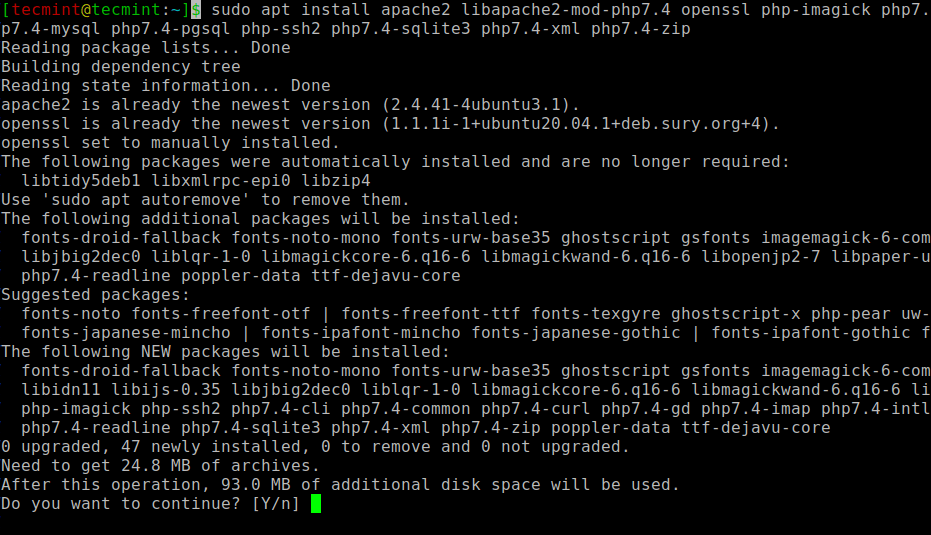
When the set up is full, you possibly can test the model Apache put in by operating the dpkg command.
$ sudo dpkg -l apache2

Begin and allow now Apache net server.
$ sudo systemctl begin apache2 $ sudo systemctl allow apache2
Affirm it Apache is operating, run the command:
$ sudo systemctl standing apache2
Now go to your browser and enter the IP handle of the server within the URL bar as proven:
http://server-IP
You need to get an internet site under that exhibits it Apache is put in and operating.
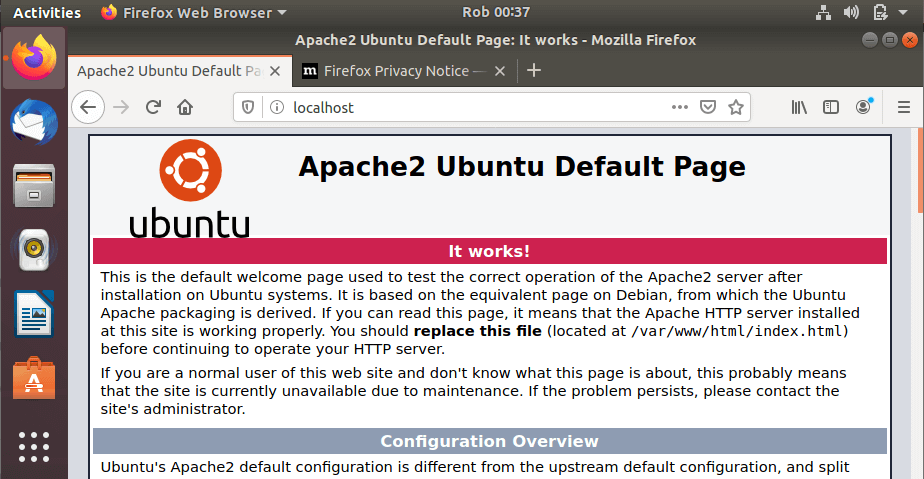
To substantiate if PHP is put in, run the command.
$ php -v

Step 3: Set up MariaDB on Ubuntu
Since Joomla requires a database within the background to retailer knowledge, we have to set up a relational database server. For this information, we’ll set up MariaDB a server that may be a fork MySQL. It’s a free and open supply database engine with enhanced options and performance.
Set up MariaDB Run the command:
$ sudo apt set up mariadb-server
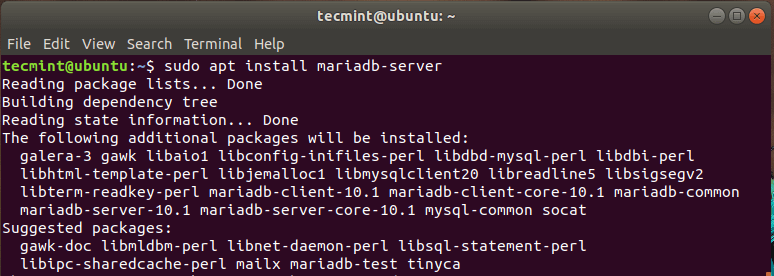
Since MariaDB is just not protected by default, leaving it weak to potential breaches. As a precaution, we’re going to safe the database engine
To perform this, challenge the command:
$ sudo mysql_secure_installation
Hit COME IN if you find yourself requested to enter the grasp password and press ‘Y’ set root password.
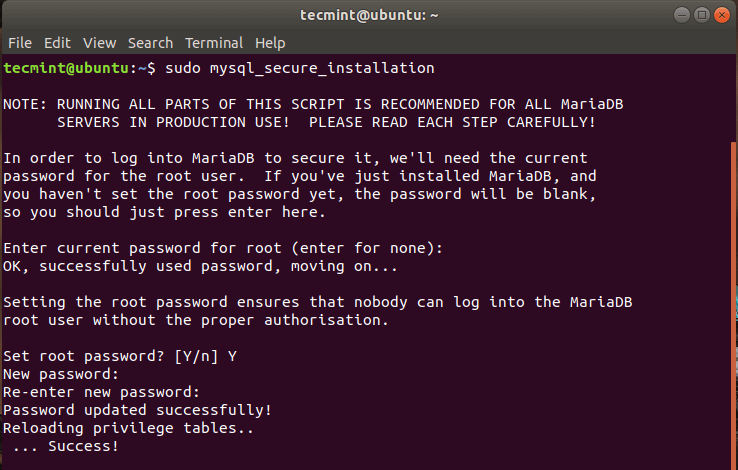
Write the remainder of the part ‘Y’ and hit COME IN set it to the advisable settings that strengthen its safety.
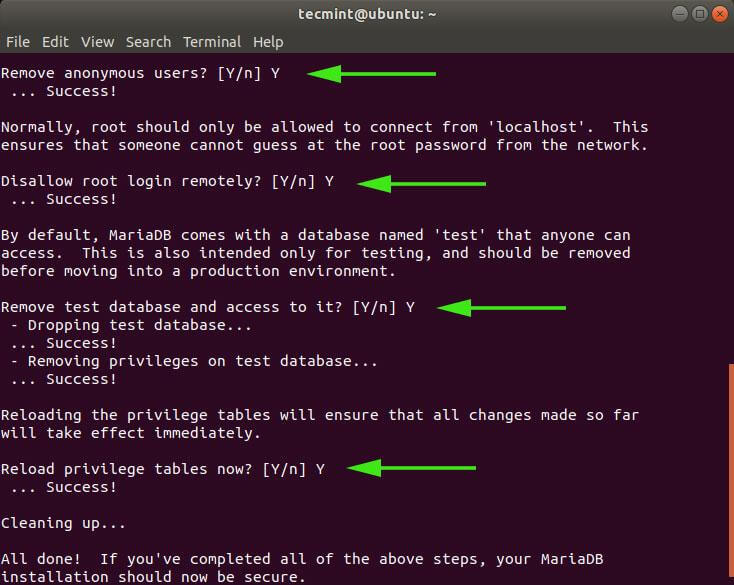
We now have lastly secured our database machine.
Step 4: Create a Joomla database
As beforehand mentioned, Joomla shops the information within the background system SQL server, on this case, MariaDB. So we’re going to create a database to retailer the information.
First, you intend to log in MariaDB utilizing the command:
$ sudo mysql -u root -p
You possibly can create a database, a database person, and grant entry to a database person by operating the instructions under.
MariaDB [(none)]> CREATE DATABASE joomla_db; MariaDB [(none)]> GRANT ALL ON joomla_db.* TO ‘joomla_user’@’localhost’ IDENTIFIED BY ‘[email protected]’; MariaDB [(none)]> FLUSH PRIVILEGES; MariaDB [(none)]> EXIT;
Step 5: Obtain Joomla in Ubuntu
At this level, we’re going to obtain the set up file from Joomla’s official website. On the time of writing, the most recent model is Joomla 3.9.26. To obtain the set up package deal, run the wget command under:
$ sudo wget https://downloads.joomla.org/cms/joomla3/3-9-26/Joomla_3-9-26-Steady-Full_Package.zip
When the obtain is full. We have to extract this to the webroot listing. So let’s make a listing and name it ”JoomlaYou may give it any title.
$ sudo mkdir /var/www/html/joomla
Extract the following compressed Joomla file to the one you simply created ‘Joomla‘index.
$ sudo unzip Joomla_3-9-26-Steady-Full_Package.zip -d /var/www/html/joomla
Whenever you’re performed, set the listing proprietor to the Apache person and alter the permissions as follows:
$ sudo chown -R www-data:www-data /var/www/html/joomla $ sudo chmod -R 755 /var/www/html/joomla
Begin., For the modifications to take impact Apache net server.
$ sudo systemctl restart apache2
Step 6: Configure Apache for Joomla
We’re going to decide Apache server to server Joomla web sites. To do that, we create digital host information for Joomla and name it Joomla.conf.
$ sudo vim /and so on/apache2/sites-available/joomla.conf
Paste the configuration under right into a file and save.
ServerAdmin [email protected] DocumentRoot /var/www/html/joomla/ ServerName instance.com ServerAlias www.instance.com ErrorLog ${APACHE_LOG_DIR}/error.log CustomLog ${APACHE_LOG_DIR}/entry.log mixed Choices FollowSymlinks AllowOverride All Require all granted
Subsequent, allow the digital machine file.
$ sudo a2ensite joomla.conf $ sudo a2enmod rewrite
Then restart the Apache net server for the modifications to take impact.
$ sudo systemctl restart apache2
Step 7: Full the Joomla set up in Ubuntu
As soon as all of the configurations are in place, the one step is the remaining configuration Joomla by way of an internet browser. Launch your browser and browse your server’s URL as proven
http:// server-IP/joomla
The net web page under is displayed. Fill within the required info, equivalent to web site title, e-mail handle, username, and password, and click onSubsequent’ button.
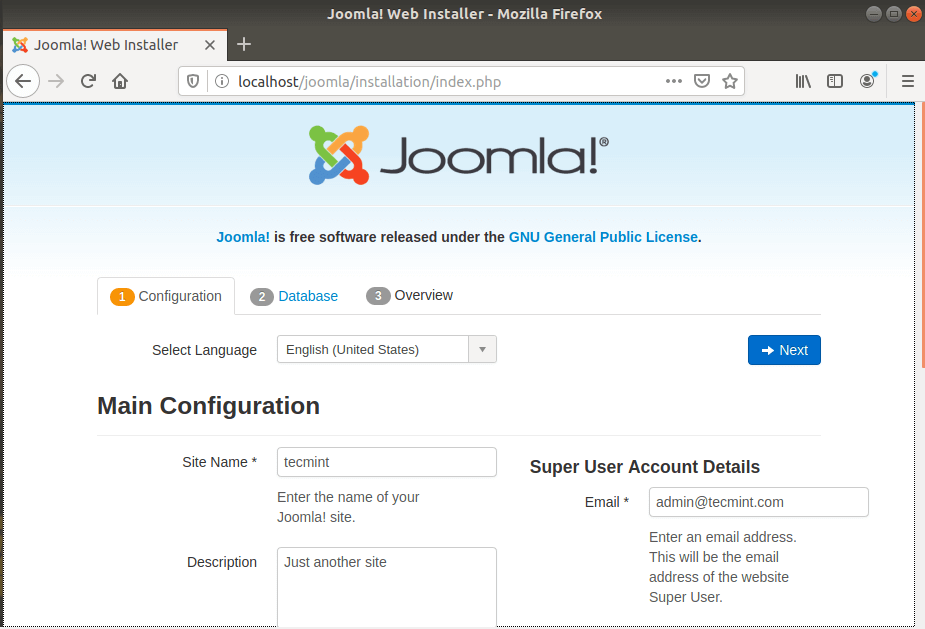
Within the subsequent part, fill within the database info, such because the database kind (Choose MySQLI), the database person, the database title, and the database password. Then click on ‘Subsequent“.
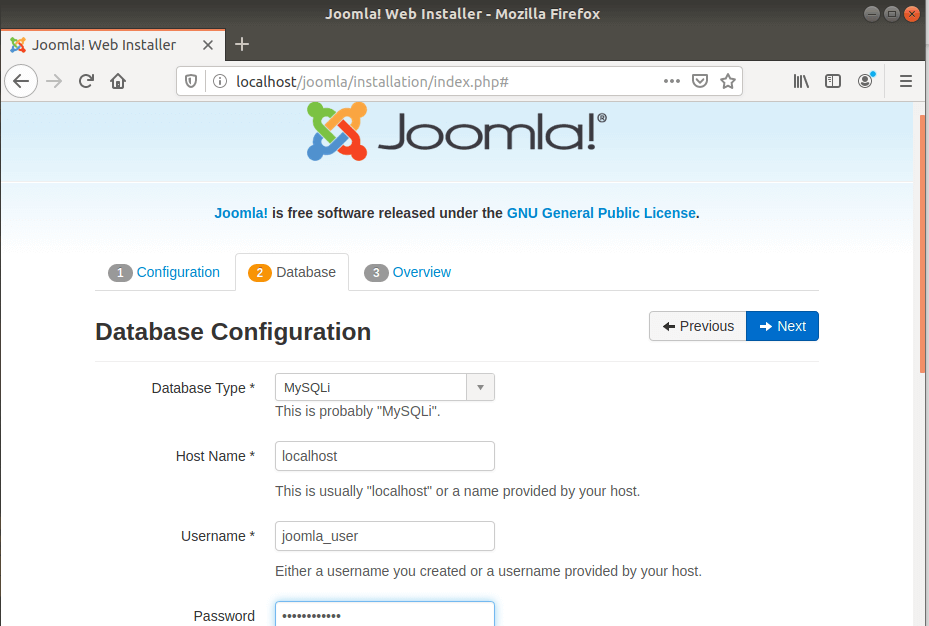
The subsequent web page provides an outline of all of the settings and permits you to carry out a pre-installation test.
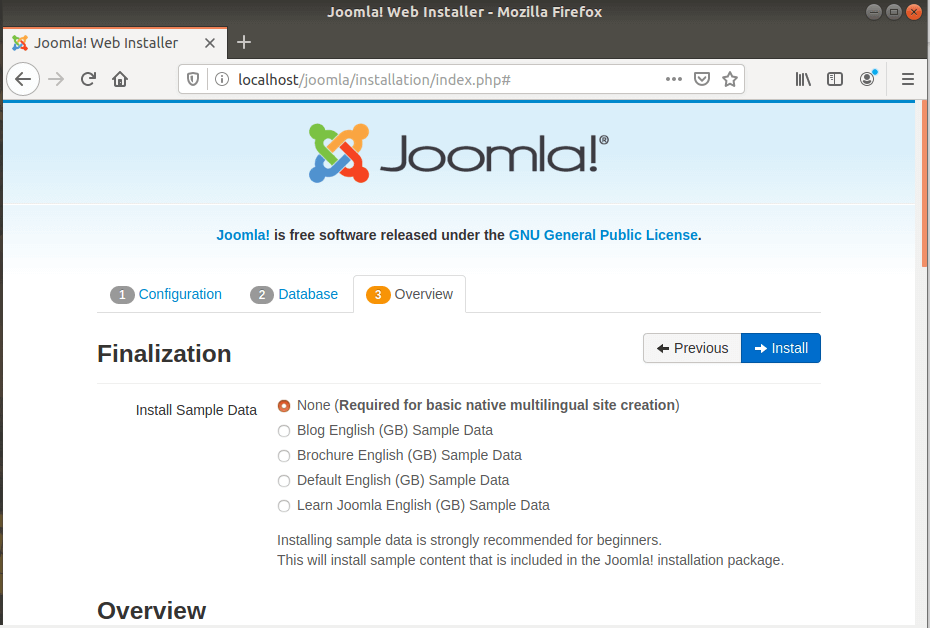
Scroll all the way down toPre – set up test‘and’Really helpful settings‘and make sure that each one required packages are put in and the settings are right.
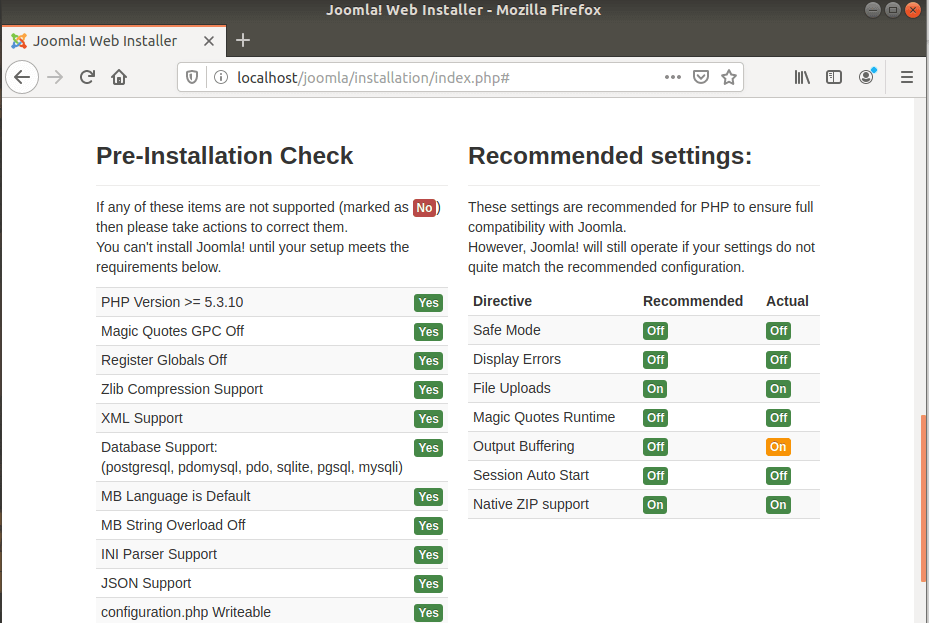
Then click onSet upbutton. The Joomla set up begins as proven within the image.
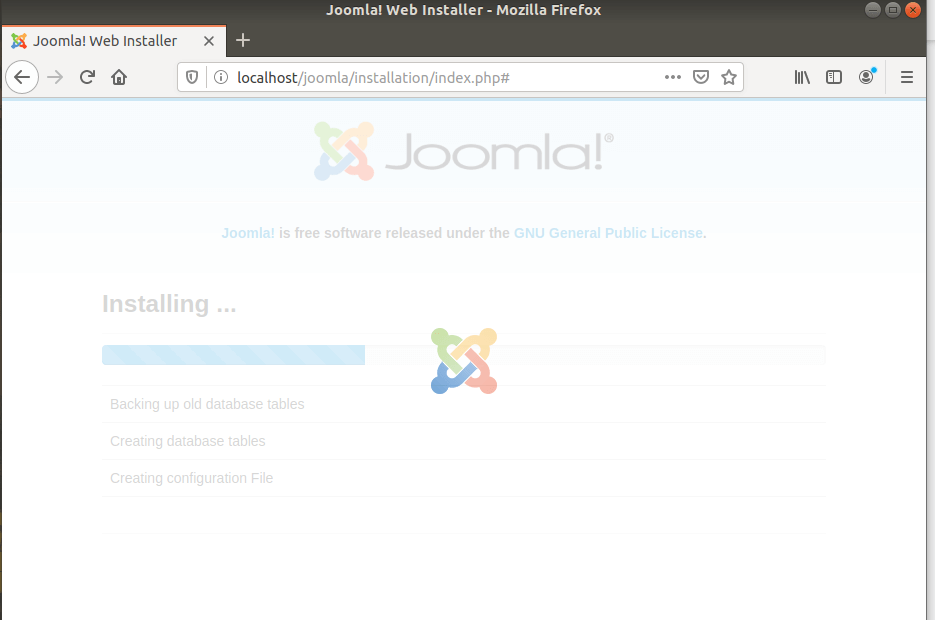
If you end up performed, you may be notified under that Joomla is put in.
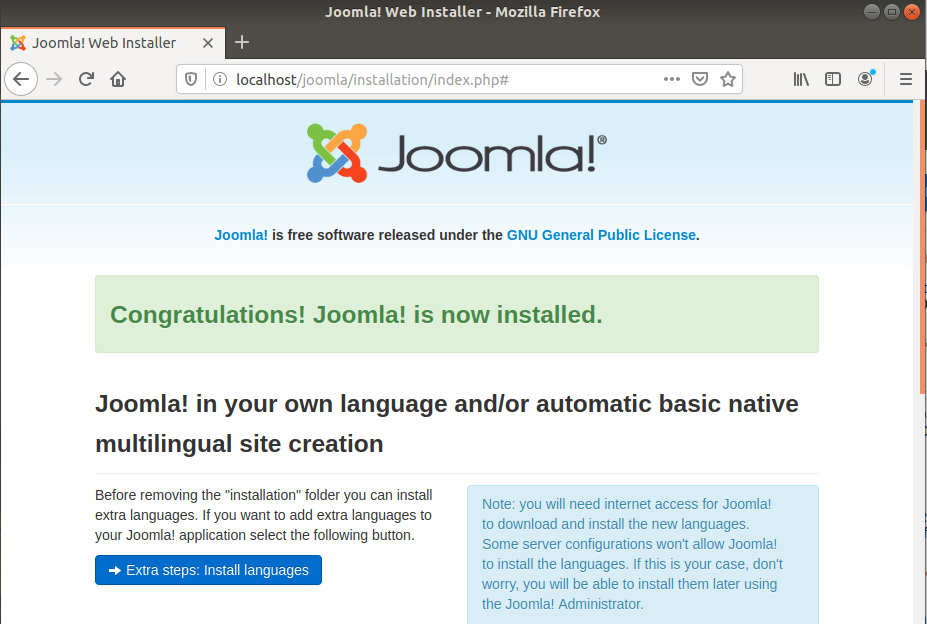
For safety causes, the installer requires you to delete the set up folder earlier than logging on. So scroll down and click onDelete the set up folderThe ” button seems under.
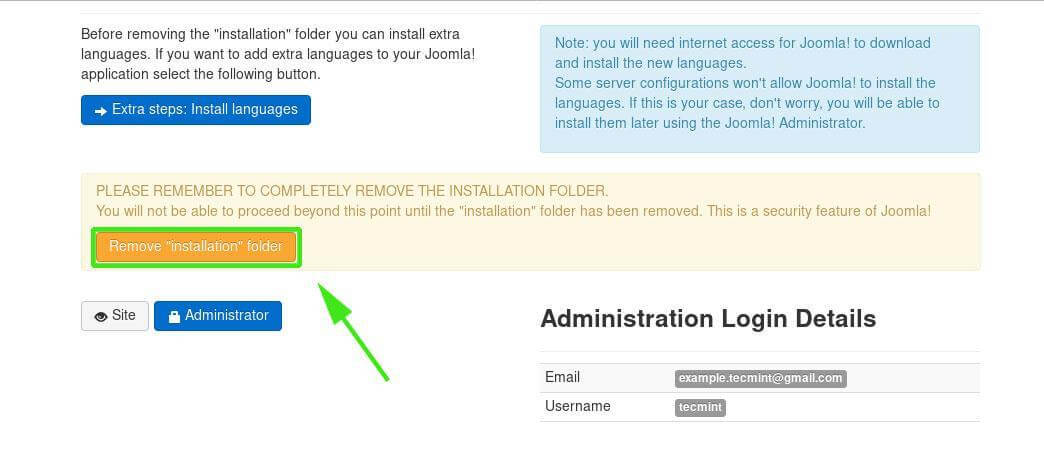
Click on to log inAdministratorbutton that directs you to the web page under.
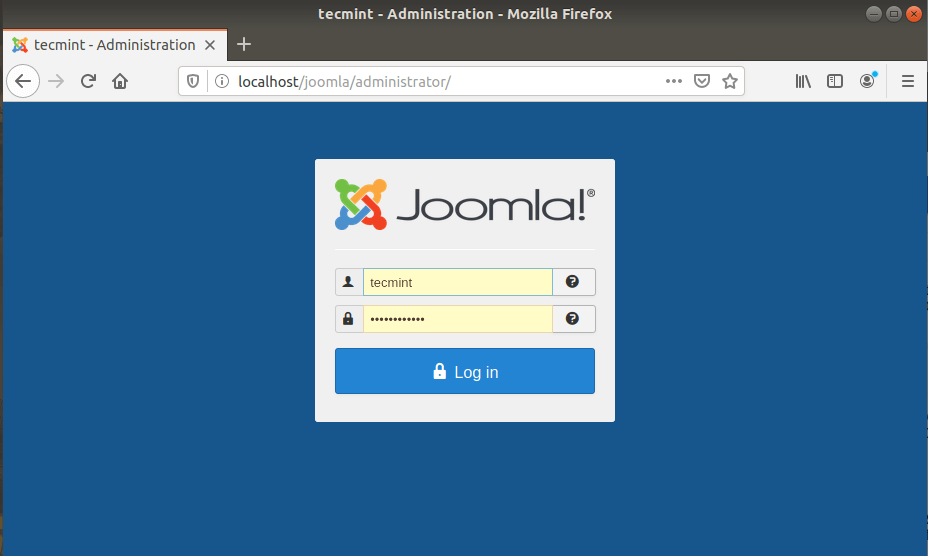
Enter your username and password and click onlog inbutton. It will take you to the Joomla Dashboard under.
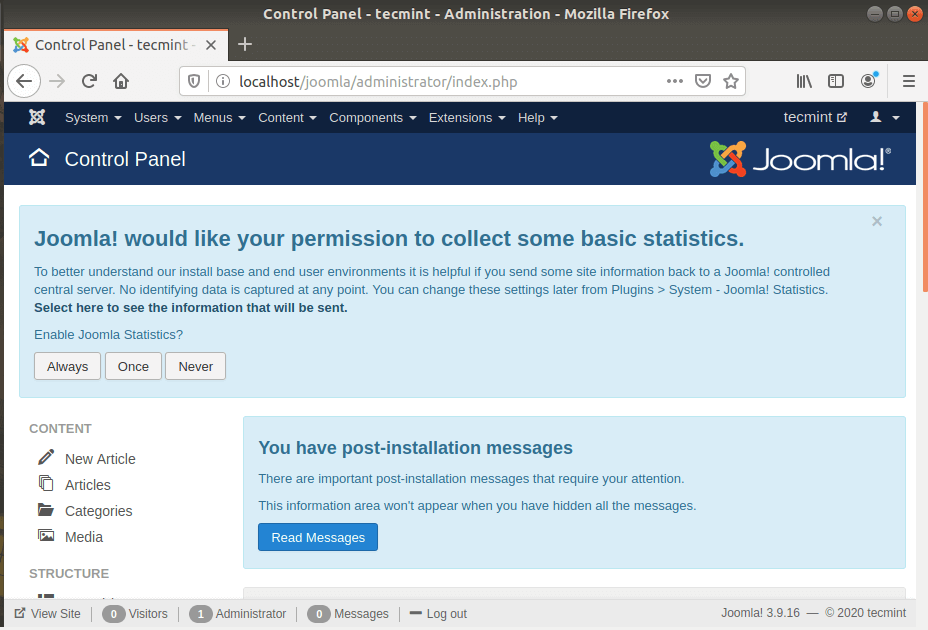
Now you can create your weblog and use varied extensions and settings to reinforce its look. We now have lastly completed Joomla on Ubuntu 20.04 / 18.04.
Comments
Post a Comment